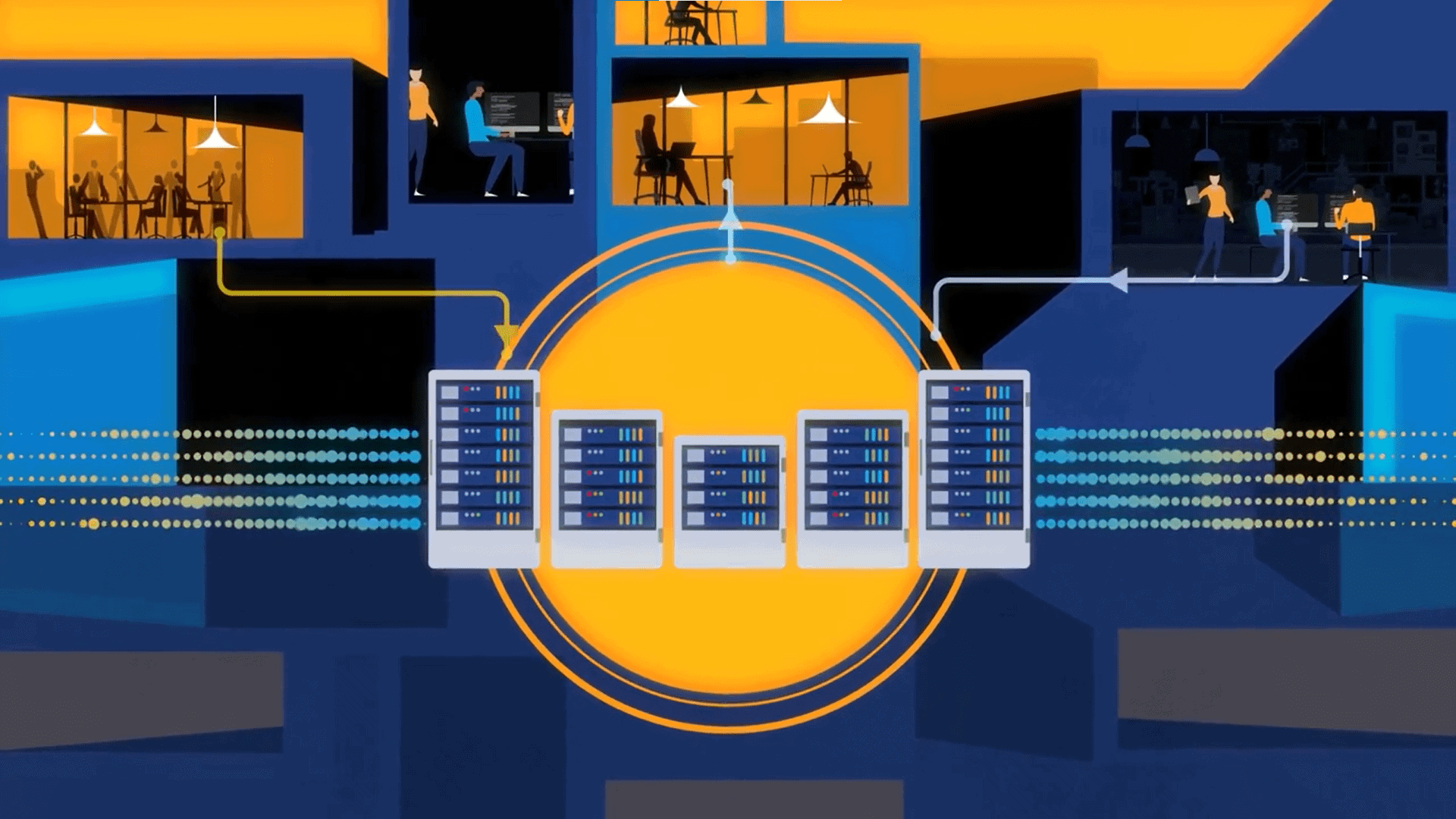
Achieving transformational AI maturity means tackling the infrastructure barriers that stand in the way of scale, speed, and security.
AI-mature organizations that have successfully woven artificial intelligence (AI) into their daily operations are already seeing measurable gains, both operationally and financially.
A recent study by S&P Global Market Intelligence examined organizations across three stages of AI maturity: Operational, Accelerated, and Transformational. The largest share of respondents (45%) placed themselves in the mid-tier Accelerated stage. However, more than half of all respondents expect to reach Transformational maturity by 2027, where AI is embedded into nearly every function of the business.
It’s an ambitious target, but one with demonstrable benefits. Among those already at the top tier, 81% reported better or significantly better results in 2024 compared to their peers, a 25-point advantage over organizations at the Operational stage and a 10-point lead over those at the Accelerated stage.
Reaching that level, however, requires more than model development. As enterprises push AI into high-stakes, real-time workflows, many are discovering that their infrastructure can’t support the scale and complexity that Transformational AI maturity demands.
The study revealed four key infrastructure barriers that slow AI maturity, and how leading organizations are breaking through these barriers to reach the Transformational tier.
See also: Studies Find Scaling Enterprise AI Proves Challenging
Barrier #1: Infrastructure That Can’t Meet Real-Time Demands
For many organizations, the first and most pressing obstacle to Transformational AI maturity is performance.
Fifty-four percent reported that their compute resources fell short for real-time inference workloads. Fifty-three percent said they face storage throughput issues, and 47% cited data locality as a barrier. These constraints directly hinder the ability to operationalize AI in environments where speed and responsiveness are critical.
The underlying issue is that much of today’s infrastructure was built for workloads such as web applications, batch processing, or analytics pipelines, not the high-throughput, low-latency demands of dynamic AI inference. Data delays, inconsistent compute capacity, and long distances between processing and end users will erode performance at scale.
How Transformational organizations break through it
At the Transformational stage, infrastructure is treated as a driver of competitive advantage and funded accordingly. Most dedicate more than 60% of their IT budgets to cloud resources and run 16% more models on average than their peers. Many are moving away from traditional hyperscale providers toward GPU-optimized and composable environments that offer greater control over performance. They also build in the capabilities needed to monitor systems and coordinate workloads from the ground up. Critically, they position compute resources closer to end users to maintain the speed and responsiveness that large-scale AI demands.
Barrier #2: Single-Provider Dependence Hinders Agility
As AI adoption accelerates, many enterprises are discovering the trade-offs of tying too much of their infrastructure to a single hyperscaler.
Hyperscaler pricing models are often opaque, leaving teams unsure how usage will translate into costs until the bill arrives. In some cases, organizations end up paying for compute capacity that sits idle because it can’t be scaled or allocated in a way that fits their needs.
Even when the infrastructure is available, rigid platform rules can stand in the way of tuning performance for specific AI workloads. Long-term reliance on a single provider can also create vendor lock-in, making it harder to change configurations, shift workloads, or adopt new technologies without incurring significant cost and operational disruption.
How Transformational organizations break through it
Transformational organizations are the ones most actively moving beyond hyperscaler dependence. Their selection criteria for infrastructure partners go well beyond cost or basic functionality; 83% want open ecosystems, 81% seek transparency, and 84% value financial stability. These priorities give them room to adapt deployments as workloads shift and regulations change.
Rather than locking into a single provider, these organizations spread workloads across a portfolio of environments and rely on modular, composable infrastructure to build exactly what each use case requires. This multi-provider approach helps them avoid rigid, uniform architectures and ensures their AI systems can evolve with operational demands in a changing market.
Barrier #3: Unstructured Rollouts Limit Momentum
Pushing more AI models into production is a sign of progress, but it also raises the stakes.
Over the past year, organizations increased their production model counts by almost 24%, and among the most advanced adopters, the jump was 38%, taking them beyond 220 models in active use.
But this kind of growth adds weight to every operational decision. Each model introduces more infrastructure to track, more interdependencies to manage, and more opportunities for errors to creep in.
For many teams, the challenge is less about building the next model and more about keeping the entire portfolio running smoothly. When processes remain manual and monitoring is piecemeal, the complexity can snowball, slowing down deployment cycles and making it harder to scale.
How Transformational organizations break through it
Transformational organizations put structure at the center of their scaling strategy. They use open-source AI models 2.6 times more often than their less mature peers, and the majority (67%) adapt those models internally to fit their needs. They also avoid unplanned or ad hoc rollouts, using consistent, codified environments that ensure every rollout follows the same blueprint.
This disciplined approach turns orchestration and monitoring into everyday operating principles rather than one-off tasks. The result is a deployment process that supports rapid iteration and keeps infrastructure and AI teams aligned, even as the number of production models increases.
Barrier #4: Security and Compliance Challenges Derail Timelines
For many organizations, getting a model production-ready isn’t just about technical performance; it’s about meeting security and compliance requirements.
Forty-five percent of respondents named security and compliance as one of their most significant constraints. The uncertainty of shifting rules and regulations across multiple geographies and the need to be audit-ready can stop an otherwise capable model from ever being deployed, especially in heavily regulated industries.
In many cases, the root of the problem lies in fragmented infrastructure and limited insight into vendor operations. As inference workloads scale, the gaps become harder to ignore: Confirming that data is controlled properly, showing exactly how a model reached its outputs, and producing proof for compliance teams all become more complex and time-consuming.
How Transformational organizations break through it
For Transformational organizations, security and compliance are built in from day one. When choosing a cloud provider, 83% name security and compliance as a leading criterion. But their decision-making doesn’t stop there.
These organizations look for AI cloud partners that are financially stable, operate with transparency, and support open AI ecosystems. Such partners make it easier to meet regulatory demands over time and avoid being locked into a single vendor.
In practice, this means building platforms where safeguards are woven directly into the code and processes. Policies are embedded through infrastructure-as-code, audit records are generated automatically, and deployment approaches are tailored to meet the rules of each operating region. Building these protections directly into the architecture itself allows Transformational organizations to keep up with deployment schedules without risking fines, legal action, or customer loss.
Achieving Transformational AI maturity means tackling the infrastructure barriers that stand in the way of scale, speed, and security. The leaders in this space are proving that by funding performance-ready infrastructure, standardizing deployment practices, embedding security into their architecture, and moving beyond single-provider dependence, it’s possible to unlock AI’s full potential. Their example shows that the right foundation not only accelerates deployment but keeps it resilient as demands evolve.






























